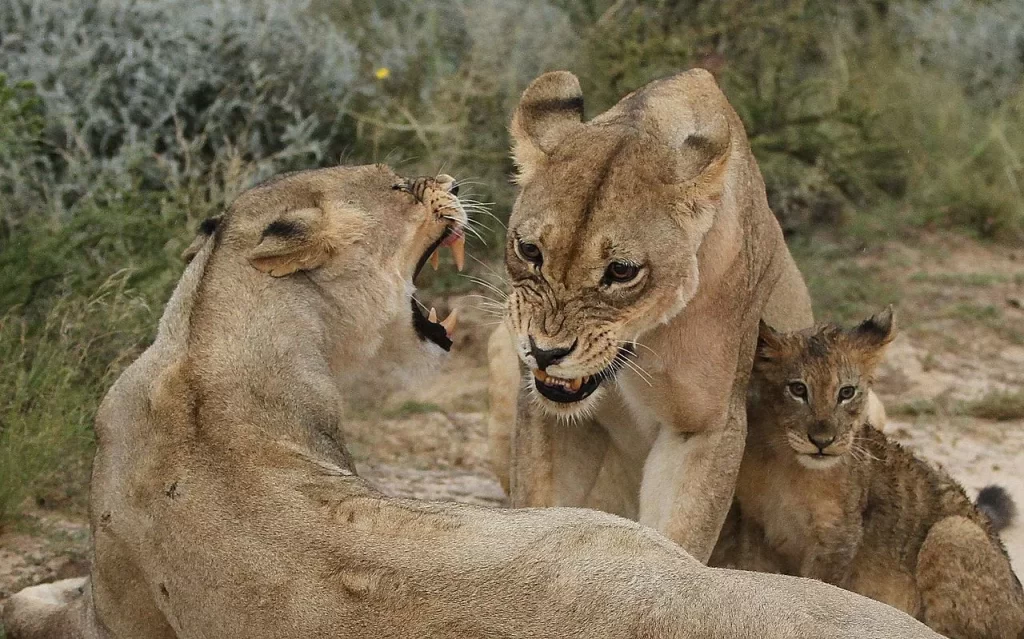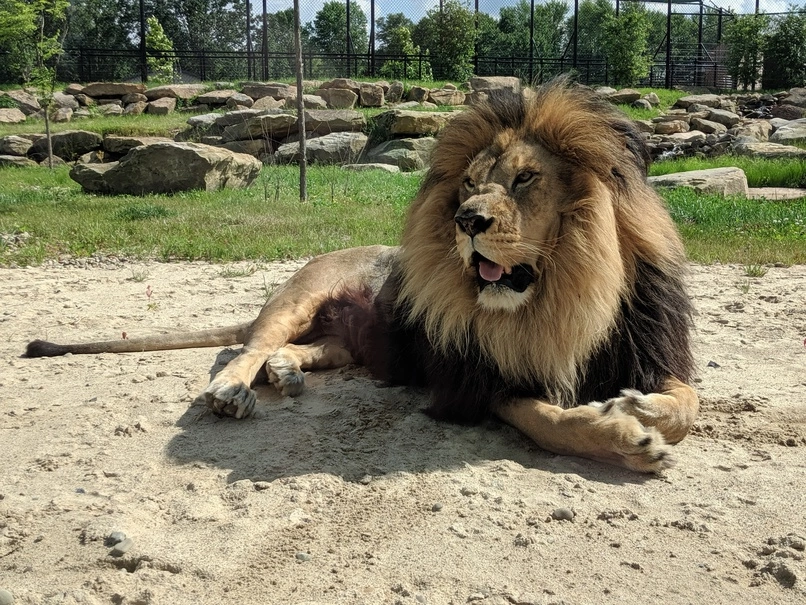The African Lions are one of the amazing species of wild animals you would always enjoy looking at and learning about. The African lion, which has been a symbol of Africa for a long time, is currently living in danger and uncertainty and its population continues to reduce. Research shows that in Africa, the lion population has reduced by a staggering 90% within the last century.
Yes, the African Lions are currently endangered and are at the verge of getting extinct from the African Savannah if more conservation efforts will not be quickly effected. Currently, African lions have been tagged “vulnerable” by the International Union for the Conservation of Nature’s (IUCN) Red List of Threatened Species.

Due to how lions in Africa are reducing at unparalleled rates in some countries, lions have been categorized as “critically endangered” in those countries. However, many conservation organizations have come up and are taking the initiative to take care of the lions and avert further endangering, which would otherwise lead to extinction of this amazing king of the jungle.
Why Are African Lions Endangered?
The African king of the jungle stands endangered due to a number of issues, of which some are heavily dependent on human choices to put the lions at risk. Some of the causes behind the endangerment of the African lions are:
- Habitat loss: The loss of habitat tops the list of the reasons behind the ongoing extinction of wild animals in the African forests. Conservationists say that currently, African lions occupy only about 8% of the forest lands they previously occupied. This has robbed the lions of the expansive savannah grasslands they require for them to get enough food, live together socially as a pride and also find mating partners for their social behaviors.
- Poaching: Poachers kill lions for their body parts and bones which are sold. The body parts and bones, though said to have some health benefits, the purported benefits are scientifically disapproved. Such activities have led to reduction in African Lions population.
- Human wildlife conflict: As forests are being cleared for human settlement and industrialization, human-lion conflicts are rising and the African lions are being pushed to the verge of extinction.
- Climate change: As climate change continues to sting the world, forest cover is reducing and desertification and other unfavorable conditions are threatening the natural existence of the African lions. The savannah grassland and the thickets are reducing significantly.
- Diseases: Among the captivity lions, renal, dental diseases and neoplasia, are the most prevalent diseases and causes of death. Lions in the wild usually die of feline immunodeficiency virus (FIV) and feline herpesvirus diseases.
How Many African Lions Are There?
In The Wild
The African lion, which is the second largest living cat after the tiger, is known to reign in the jungle and a sight of one proves amazing and fulfilling.
Only approximately 15, 000 lions are remaining in the African forests.
In the wild, the African lions are left to roam around, hunt their food and get water by themselves. They are free in the forests and their engagements and breeding activities are not regulated by humans as those in captivity.
In Captivity
Lions in captivity are those which were tamed from the forests and are now conserved in human-regulated points. In captivity, they are provided with food, water and veterinary services by human beings.
There are approximately between 8,000 and 14,000 lions living in captivity. In South Africa alone, an estimated number of between 8,000 and 10,000 lions is recorded to be in captivity, conserved in over 450 private conservation points.

Captive-bred lions are lions which were born and raised in captivity. All the requirements of the lions, such as food, water, security as well as favorable breeding conditions of the lionesses are met by human beings for them to produce offspring.
How Many African Lions Are Left In The World?
The sight of an African lion is refreshing to the eyes and their roar is a prove that the African lion rules the jungle.
Currently, the global population of the African lions in the world is slightly above 23, 000. This number has reduced by three quarters within the last century.
Poaching, human-lion conflicts and loss of habitat have contributed to this unprecedented rate of lions’ reduction in Africa and generally, around the world. In Africa, the highest lion population is in Tanzania, having a lion count of 8,176, followed by South Africa, which has about 2,070 lions. Kenya has 1,82, while Zimbabwe has 1,709 lions in its conservation points.
Which Lion Breeds Are Extinct?
The African lions are already extinct in a whopping 26 countries across the African continent. If the rate of poaching and loss of habitat continues as it is currently, the African Lions might be completely extinct by 2050. Within the last 21 years only, the big cat’s population has reduced by 43%.
Researchers identify the Barbary lion, also called the North African lion, Northeast Congo Lion, European Cave Lion, West African Lion, Asiatic lion, Egyptian lion and the Katanga Lion breeds to be extinct.
The Barbary lion also known as Berber or Atlas lion, lived in the Barbary Coast of the North-African region of Morocco and Egypt, the spread of firearms and embracing of lion shooting activities led to its extinction. The Asiatic lion can only be spotted in the Gujarat state of India and its range remains restricted.

What Conservation Efforts Are In Place For Lions?
In Africa, initiatives to preserve the remaining big cats have increased and are becoming fruitful. The tactics being employed are:
- Involving communities: Communities living near lion conservation areas such as game parks are being involved in the lion conservation initiatives. This makes them appreciate the benefits of having lion populations in Africa.
- Alleviating human-wildlife conflict: This has been possible through educating the public on how to take care of lions and allow them to freely roam their habitats for food and natural survival needs. Avoiding the encroachment of lion habitats through forest clearing for human settlements and industrialization has been the major focus for conservationists.
- Lion-tracking: To prevent poachers from getting to the lions, which are already endangered, technology has been used to track their movements. This makes them safe from poachers.
- Research: By using research and releasing data on the African lions’ welfare, many organizations, research institutions and governments have been triggered to unleash more efforts into lion protection. Disapproving the claim of using lion body parts and bones for medicinal purposes is also contributing to reducing poaching of lions.
